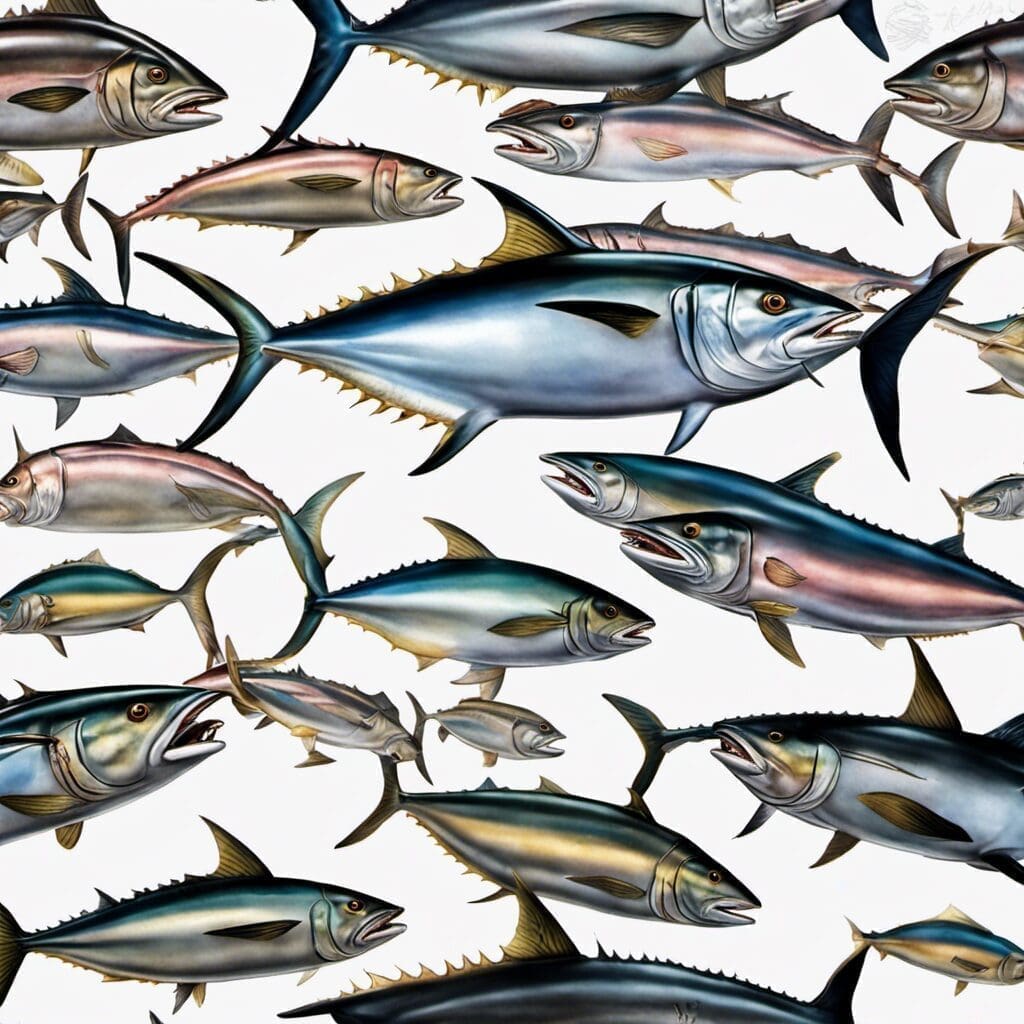Introduction
The Bullet Tuna, scientifically known as Auxis rochei, belongs to the Scombridae family. This species is one of the smaller and faster members of the tuna family, hence its name which is reflective of its bullet-like speed when swimming.
Conservation Status
The IUCN Red List classifies the Bullet Tuna as a species of least concern, given its abundant population and vast distribution. Efforts to sustainably manage and monitor the fisheries that target Bullet Tuna are ongoing to ensure the longevity of the species.
Statistics
| Category | Statistics (Average, Range) |
|---|---|
| Length | Average: 50cm, Range: 35-70cm |
| Weight | Average: 1.8kg, Range: 1-2.5kg |
| Lifespan | 4-5 years |
Distribution
The Bullet Tuna is found in warm waters worldwide, particularly in tropical and temperate regions. It is common in the Eastern Pacific from California to Peru, the Atlantic, the Mediterranean and the Indian Ocean. The species exhibits a nomadic lifestyle and migration patterns are still under study.
Habitats
The Bullet Tuna typically resides in offshore waters and is known to prefer warm, open and deep water, around 200 meters deep. It is tolerant to a wide range of temperatures.
When and Where to See
The Bullet Tuna can be spotted throughout the year, although the population increases noticeably in late summer and early autumn. The fish are usually seen near the ocean surface during the day.
Best Fishing Locations
Suitable locations for Bullet Tuna fishing include:
- Andaman Sea (Thailand)
- South China Sea (China, Taiwan)
- The coasts of Oman
- Atlantic coast of Morocco
- Mediterranean Sea (Spain, Italy)
- Aegean Sea (Greece, Turkey)
To find Bullet Tuna, look for schools of baitfish on the surface as they often feed on them. They also have a preference for warm ocean currents.
How to Catch
Bullet Tuna are commonly caught using trolling or drift fishing methods with live or dead bait. The preferred baits are smaller fish such as sardines or pilchards. The best time to fish is during the day, particularly during late summer and early autumn when the population is more abundant.
Identification Guide
Bullet Tuna possess a distinct elongated and streamlined body with a dark metallic blue color on the back and silver-white on the belly. They can be differentiated from other tuna species by their small size and their long, slim shape. They often bear a characteristic patch of tiny, brush-like scales in front of the tail.
Culinary Uses
Bullet Tuna is commonly used in grilling, frying, and even as sushi. It has a rich, full flavor and firm texture. Bulket Tuna is also high in protein and omega-3 fatty acids, making it a nutritious choice. Its use in traditional Mediterranean and Asian dishes is widely noted.
Additional Information
Bullet Tuna are known to feed on smaller fish and squid. They are preyed upon by larger fish such as the Yellowfin Tuna and various shark species. Human disturbance, mainly through commercial fishing, is their primary threat.
They have an important ecological role as both predators and prey, contributing to the marine food web’s stability. In terms of cultural significance, they are popular in recreational fishing and have a significant economic impact on fisheries in many areas.
References and Further Reading
For more information on Bullet Tuna, consider the following sources:
- Fishbase – Auxis rochei
- IUCN Red List – Bullet Tuna

